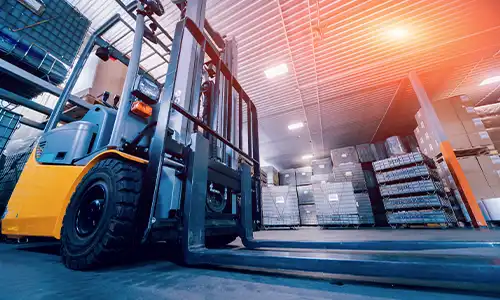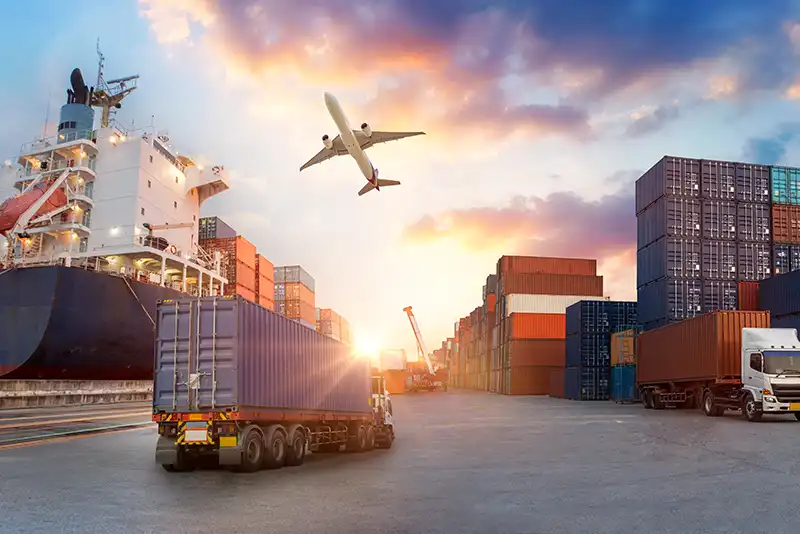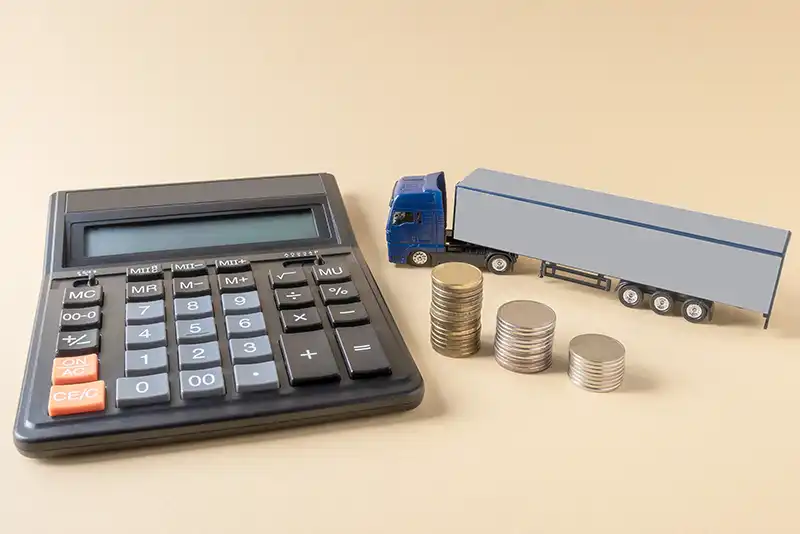Freight – A Guide for Australian Businesses

Published: August 13, 2023 | Last Updated: April 14, 2024
Freight is an essential component for businesses in Australia and across the globe.
If you have it, then it came in as a freight shipment. If you’re providing it, then you need to ship it out to your customers as freight.
From definition to pricing and everything in between; here’s what your business needs to know about freight.
Freight Defined
The word ‘freight’ (pronounced as ‘frayt’ and rhymes with ‘eight’) refers to goods transported in bulk (noun) by truck, train, ship, or aircraft. It can also be used as a verb, meaning the act of transporting goods in bulk. Freight is often put onto pallets for ease of transport.
Freight that uses multiple modes of transport is referred to as intermodal freight. Freight transport services come in different forms, and can either be implemented in-house or with a specialised provider like us at Freight Assist.
Types of Freight Products
Freight comes in many sizes and shapes, and each type will have different requirements for transport. Here are some general classifications:
General Freight
General freight refers to any regular freight that does not have specialised requirements. It is often palletised for ease of transport.
Bulk Freight
Bulk freight refers to large quantities of the same good loaded directly onto a vessel, such as grain or coal. In contrast to general freight, bulk freight is not palletised.
Liquid Freight
Liquid freight such as fuel, oils, and milk; is transported by specialised tankers in high volume. Liquid freight is typically considered bulk freight as well.
Dangerous & Hazardous Freight
Dangerous & hazardous goods can be harmful if not handled properly. For this reason, it requires specialised processes and equipment from qualified providers. Examples of dangerous & hazardous goods include certain gasses, explosives, and flammable materials.
Livestock Freight
Livestock freight refers to the transporting of animals, typically for commercial purposes. Special considerations are required for livestock freight, such as animal welfare, emergency procedures, and regulations/compliance.
Refrigerated Freight
Refrigerated transport requires climate-controlled vehicles, and includes certain food, beverages, medications, and horticultural products.
Automotive Freight
Automotive freight transport can be conducted by a variety of vehicles, such as open trailers, enclosed, and multimodal transport. Specialised equipment, insurance, and adhering to safety rules and regulations are required for automotive transport.
Ugly Freight
Ugly freight is a general term used for shipments that are difficult to transport due to their size, shape, value, or fragility.
Examples of ugly freight are rare artwork, luxury cars, extreme weight or oversized objects like industrial or medical equipment, and special animals like race horses.
Ugly freight requires special care and attention, and can require specialised equipment, personnel, and qualifications. Thus, it costs quite a bit more to transport, and some carriers will refuse to ship it altogether.
Modes of Freight Transport
Freight can be transported in a variety of ways. Each poses specific benefits and drawbacks based on time sensitivity, type of freight, and budget.
Here are the main ways that freight can be transported:
Truck (Road) Freight
Road freight involves transporting goods by truck on highways and roads. It provides the flexibility to deliver goods to specific locations, making it especially valuable for last-mile delivery or for regions without direct access to other transport modes.
Rail Freight
Rail freight involves transporting goods in containers via train networks. This method is particularly efficient for transporting large volumes of heavy goods over long distances, especially in countries with extensive rail infrastructures.
Ground Freight
Ground freight is a broad term that refers to freight that is transported on land. It includes road freight and rail freight.
Air Freight
Air freight is the shipment of goods by an air carrier, allowing for rapid transport of goods across vast distances. It’s especially suitable for high-value, low-volume, and perishable goods due to its speed but tends to be more expensive than other methods.
Maritime (Sea) Freight
Maritime freight is the transportation of goods by sea using cargo ships. This is the most common way to transport large volumes of goods internationally due to its cost-effectiveness, though it is considerably slower than air freight.
Cargo Transport
The word “cargo” is often used interchangeably with “freight” when referring to transport by air or sea (and not land). Similar to the word “freight”, cargo can be use both to refer to the goods them selves and the transportation of the goods. For example, ships that transport freight are called “cargo ships” and the freight on them is often referred to as “cargo”. Transport by air could also be referred to as “cargo transportation”.
It’s not a specific mode of transport, but an important term to include.
Intermodal
Intermodal transport uses a combination of the methods mentioned above, often transferring goods between multiple modes to optimise efficiency and cost.
Types of Freight Transport Services
We’ve covered specific types of freight and modes of transport, now lets get into your service options for transport.
As an essential component for many businesses, freight transport can either be conducted in-house or by a specialised logistics provider or freight forwarding company.
1PL Freight Transport
When a business transports their own freight in-house using their own trucks and drivers, it is considered 1PL or first party logistics.
Advantages of first party freight transport include full control, tailored solutions, and the potential for long term cost savings.
3PL Freight Transport
When businesses contract out their freight needs to a specialised transport company in Australia or across the globe, this can be called 3PL or 3rd party logistics.
3rd party logistics companies offer freight transport and additional elements of the supply chain such as warehousing and distribution.
3PL providers specialise exclusively in optimising the supply chain and streamlining operations. For example, we at Freight Assist offer 3PL warehousing solutions that are designed with efficiency as the top priority. We utilise leading technology, invest heavily in people and processes, and have strategic warehouses in Sydney, Melbourne, and Brisbane. This is all aimed at providing the highest level of service at the best rate possible.
For these reasons, 3PL’s can introduce significant cost savings and efficiencies in the transport of freight and other elements related to the supply chain.
Freight Forwarding
The term freight forwarding refers specifically to the transport element of logistics. Freight forwarders work to ensure the efficient transport of goods across various modes of transportation, oftentimes internationally. They also handle the associated paperwork, compliance, and handling involved in moving goods. A freight forwarder may physically take possession of the freight, or they can act as the intermediary between the shipper and the carrier.
Freight Brokering
Freight brokers are similar to freight forwarders in that they both deal with arranging the transport of goods. However, brokers take a less involved role than freight forwarders. They act strictly as an intermediary between the shipper and the carrier, working to negotiate rates, ensure compliance, and facilitate communication between the shipper and the carrier.
Freight Transport Pricing & How It’s Calculated
The cost of freight transport can vary greatly based on how you’re transporting the goods, who you hire, the nature of your freight, and any special requirements such as time sensitivity or insurance. Freight that is hazardous, bulky, or requires special handling will cost more to transport. Real-time variables such as demand and the current cost of fuel can also affect the pricing.
Despite these variable factors, all freight is typically billed as a function of weight, density and distance. The heavier the cargo, more space it takes up, and the farther that it is going, the more that it will cost to transport.
Volumetric weight vs. dead weight
The dead weight of freight is simply what it actually weighs. Most freight is billed off of its dead (actual) weight.
Volumetric weight is a special value used to determine the billable weight of large, bulky items that don’t weigh much (are low in density). It factors in the length, width, and height of the cargo.
Volumetric weight can be calculated by multiplying the length by the width by the height (in meters) of your freight, then multiplying that by your freight company’s volumetric (or cubic) conversion factor.
Any time your freight’s volumetric weight is greater than its dead (actual) weight, you will be billed off the volumetric weight.
For example, at Freight Assist, our volumetric conversion factor is 333. If you have a shipment that weighs only 300kg but it’s 1.3m x 2m X .75m , then its chargeable (volumetric) weight would be:
1.3 x 2 x .75 x 300 = 649kg
In this scenario, you would be billed for 649kg of cargo rather than 300kg of cargo, since your freight is relatively low in density.
Volumetric pricing is designed to charge appropriately for freight that takes up lots of truck space but doesn’t weigh much. For example, the dead weight of a full truckload of ping pong balls would be quite light. If it were billed off of dead weight, then the shipment would not cost enough to be profitable for the freight forwarder. Volumetric pricing lets transport companies charge appropriate rates for these types of shipments.
Special pricing
While most freight transport costs are calculated as a function of weight, distance, and type of freight; it can also be billed as:
- Flat rate pricing – Involves charging a single rate regardless of the weight, size, or type of goods. This approach is less common and is usually specific to certain shipment types or distance ranges. The total charge is a predetermined flat rate.
- Spot pricing – Provides quotes on a per-shipment basis, reflecting current market conditions. This can fluctuate significantly and is calculated based on the immediate demand and supply dynamics at the time of shipping.
- Contract pricing – Involves fixed pricing or pricing agreed upon for a certain period under long-term contracts. This method offers predictability for both shippers and carriers, with charges typically predetermined and outlined in the contract agreement.
- Per unit pricing – Charges are determined based on the number of units shipped. This method is ideal for goods that are easily quantifiable, like pallets or containers. The charge is typically calculated by multiplying the number of units by a fixed rate per unit.
Since freight transport pricing varies so much based on all these factors, the best way to get an accurate idea on what you can expect to pay is to call reputable providers to give you an estimate. They’ll walk you through getting them all the relevant information for an accurate quote.
The Bottom Line
Freight refers to bulk goods and large, heavy, and/or high volume shipments. It can be used both to refer to the physical goods being transported, and the act of transporting those goods.
Freight can be transported in a variety of different modes, including road, air, and sea. It can be conducted in-house (1PL), by a specialised full service logistics company (3PL), or by a freight forwarder or broker.
Pricing will be determined on what you’re shipping, how large it is, how much it weighs, and where it’s going. Other factors such as mode of transport, special requirements, demand, and who you hire will also play a great role in costs.
Hiring a 3rd party specialised provider to handle your freight transport needs can help you streamline your supply chain and cut costs. If you’re in Australia, you can reach out to one of our experts at Freight Assist. As the nation’s leader in freight transport services since 2012, we’d love the opportunity to discuss how we can enhance your bottom line with winning supply chain solutions.
Dangerous & Hazardous Goods
Metro Distribution
3PL Warehousing & Distribution
Interstate Freight

Compliant, safe and secure transportation of dangerous & hazardous freight.

Door-to-door, store-to-door metro taxi truck services – no job too small.

Efficient, streamlined 3PL solutions for storing and distributing your freight.

Safe, reliable state-to-state transport for shipments ranging from a single pallet to a full truckload.



